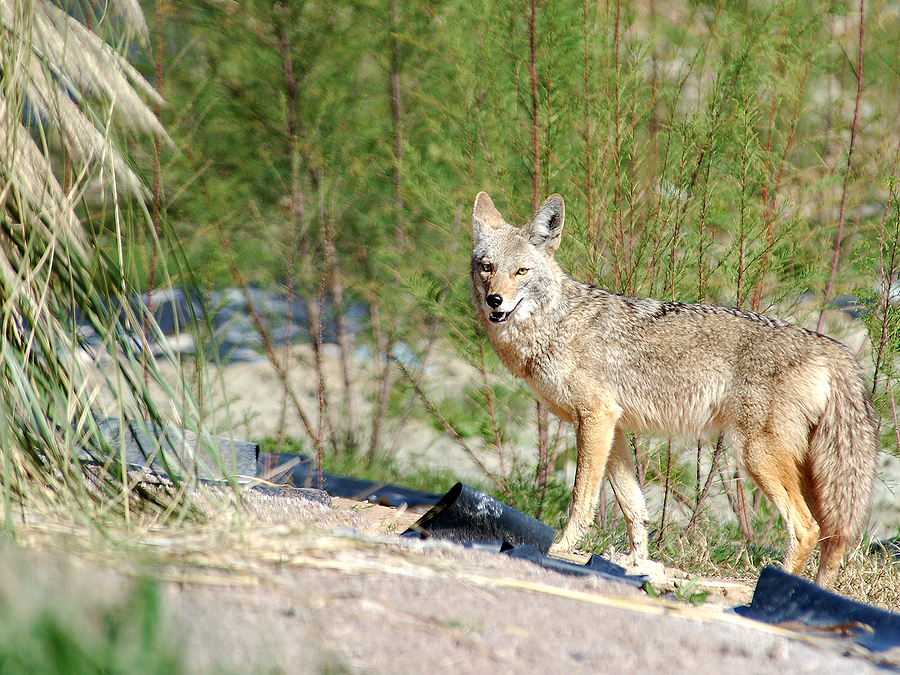The general Fear Free concept of respecting animals for who and what they are may arguably extend to urban wildlife such as coyotes.
Coyotes are survivors. While many species have paid a price for their intersection with humans, coyotes are among the few that have found a way to survive and even thrive right under our noses.
Some people have an excessive and unwarranted fear of coyotes, but the wily canids help to keep the ecosystem in balance. Golf courses and other spaces benefit from their rodent control work, particularly in urban areas. While dogs should depend on a vaccine to prevent leptospirosis, coyote control of the rat population can help to limit the incidence of lepto in a community. Leptospirosis is an infectious disease caused by bacteria in the genus Leptospira and spreads through the urine of infected animals. Rats are common carriers of the infection. Leptospirosis not only can be fatal to dogs, it is also zoonotic, meaning it can be passed to humans.
Coyote numbers are increasing in many urban areas. In New York City’s Central Park, they are glimpsed only rarely on camera traps. In Chicago it is another story. There a coyote actually walked into a convenience store on a hot day, standing next to the cooler filled with beer. Also in the Windy City, on a summer Friday night, in the busy bar area near Wrigley Field, a pair of coyotes walked nonchalantly alongside patrons before dashing off. No one paid any attention. In urban Arizona coyotes are common, as they are in many parts of the U.S.
Still, many panic and call police or animal control when they even see a coyote or seek retribution after a coyote kills a pet dog or cat. And while the outrage is understandable – pets are after all family members – nearly all the coyote attacks could have been avoided.
It’s exceedingly rare for coyotes to attack humans but they will take mid-size or small dogs or cats or attack geriatric large dogs. These attacks can nearly always be prevented.
Coyotes do not have keys to homes. Indoors, pets are safe.
It’s true that cats who are used to living outdoors may be difficult to persuade to live life indoors only. Still, many times this transition can be accomplished by making the adjustment gradually and simultaneously enriching the indoor environment, so life indoors is as interesting as life outdoors.
It’s easier to allow your pup to roam your yard without supervision, but where there are coyotes this comes with inherent risks. The secret to protecting dogs is pretty simple: being on a leash with an adult on the other end.
If a bold coyote approaches as you’re walking the dog, holler “Go away!” Carry citronella spray, which is effective in deterring loose dogs and wildlife without scaring or harming your own pet.
With good fencing, it’s possible to prevent coyotes from entering your yard. Coyote-proof fences are either at least 8 feet tall and made of a material that coyotes cannot climb or at least 6 feet tall with a protective device on top, such as a coyote roller, which rolls off any coyotes trying to scramble over the fence.
Do-it-yourself piping or chicken wire placed at the top of your fence also can prevent coyotes from getting the foothold they need to make it over. To prevent coyotes from digging under a fence, make sure the fence extends at least 12 inches underground.
Coyotes will be less motivated to enter yards if people don’t attract them by leaving out pet food. Securing trash cans with tight-fitting coyote-proof lids also reduces availability of potential dinners. Synthetic wolf urine may further deter coyotes. Spray it around the perimeter of the yard (reapply after a rain). Remember, coyotes are only trying to survive; they are not scheming and planning the demise of our pets. It’s better to coexist with them than to carelessly attract them and then try to kill them.
This article was reviewed/edited by board-certified veterinary behaviorist Dr. Kenneth Martin and/or veterinary technician specialist in behavior Debbie Martin, LVT.








